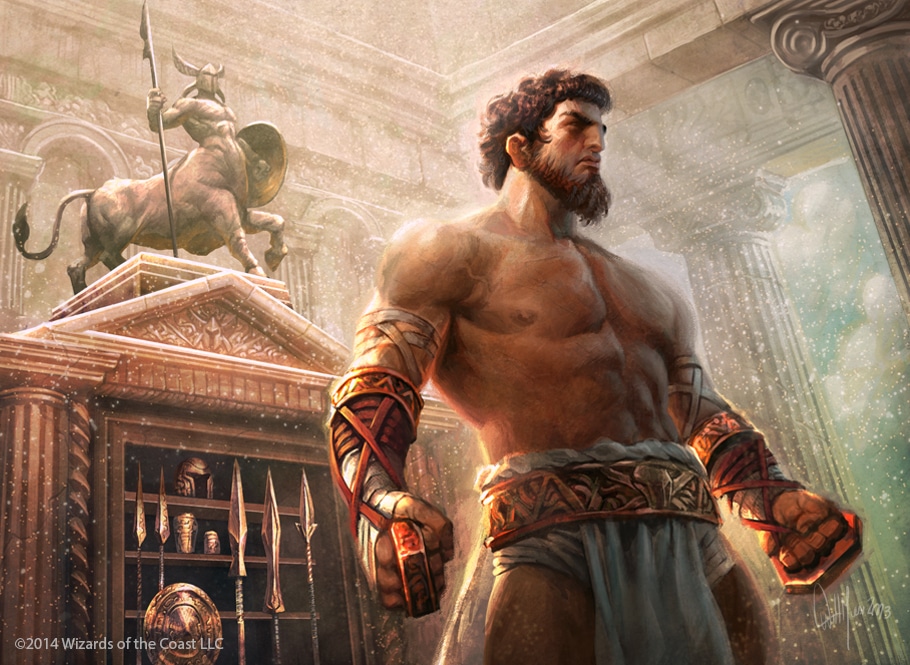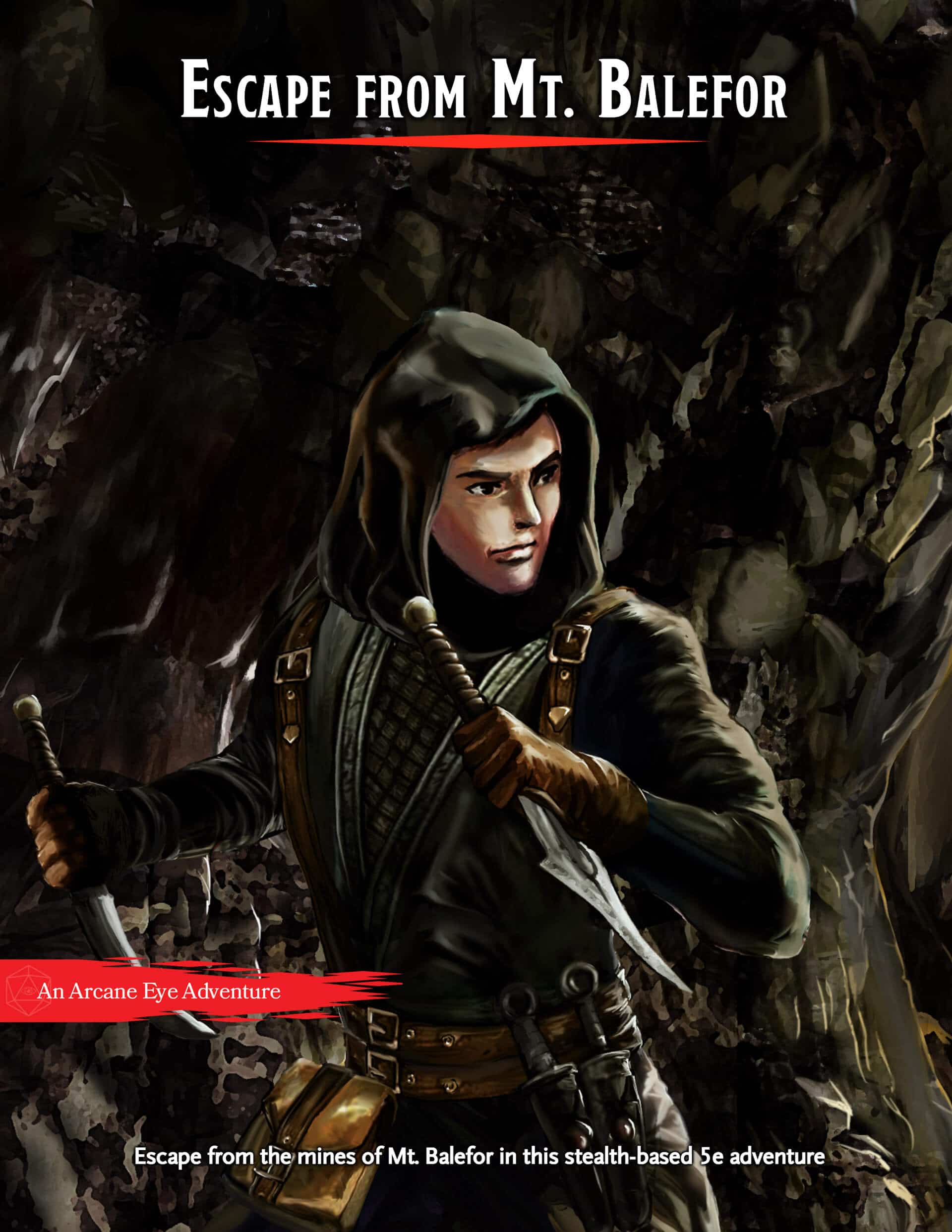Tough 5e
Published on March 9, 2023, Last modified on March 30th, 2023
Toughen up your character with more hit points! The Tough feat is a basic, but effective feat to help your character stay alive in combat.

Willian Murai - Wizards of the Coast - Hero of Iroas
Arcane Eye may earn a small commission from affiliate links in this article.
Learn more.What Is Tough 5e?
More hit points are never a bad thing. If your character is getting knocked out too easily, the Tough feat may just be for you! This feat does one thing and does it well, it increases your hit points in a way that is totally detached from your CON score or hit dice.
In recent adventures and sourcebooks, like Dragonlance: Shadow of the Dragon Queen and Spelljammer: Adventures in Space, characters are granted a limited selection of feats at 1st level. Spelljammer allows you to choose between Magic Initiate, Skilled, or Tough and Dragonlance allows you to choose from backgrounds that provide a Dragonlance specific feat or the Tough or Skilled feat.
Getting Tough for free at 1st level may be boring, but can go a long way to help your character’s survivability over the course of a campaign.
How Does Tough Work?
The Tough feat that provides characters with additional hit points, making them harder to kill:
- Your maximum hit points increase by an amount equal to twice your level when you first take this feat. For example, if you are a 6th level character, your maximum hit points would increase by 12.
- Whenever you gain a level after taking this feat, your hit point maximum increases by an additional 2 hit points.
Overall, the Tough feat is a useful choice for characters who want to increase their survivability and resilience in combat, as it gives them a significant boost to their hit points.
Is Tough Good?
In our 5e Feats Tier List, Tough was given a B Tier rating, making it a niche feat that can improve some builds in D&D 5e.
Tough is always effective, if not very exciting. An extra 2hp per level certainly adds up and will be an extra 40 hit points by level 20.
Tough 5e Interactions
In D&D 5e, you gain hit points equal to a roll of your hit dice + your CON modifier each level up. If you’re looking to expedite your hit point increases, there are very few ways to do so without pumping CON or multiclassing for a better hit dice. The most common ways to accomplish this are:
- The Tough feat, which provides an extra 2hp per level.
- Choosing the hill dwarf race at character creation, which provides an extra 1hp per level.
- Some magic items, like the amulet of health, can increase your CON, which helps increase your hit points. But, the only magic item that directly increases your hit points is the cursed berserker axe.
Which 5e Classes Make the Most of Tough?
The color code below has been implemented to help you identify, at a glance, how good the Tough 5e feat is for a specific class/subclass.
- Red isn’t going to contribute to the effectiveness of your character build at all
- Orange Situationally good, but a below-average option otherwise
- Green is a good option
- Blue is a great option, you should strongly consider this option for your character
- Sky Blue is an amazing option. If you do not take this option your character would not be optimized
The tough feat provides an extra 2hp per level, which would equate to increase your CON score by 4 during character creation. It usually has a larger impact for classes with lower hit dies, so wizards and sorcerers will feel the largest impact. That said, it can certainly be a worthwhile for any class that is looking for a survivability boost.
Artificer: Artificers have reasonable survivability compared to other casters because of their shield/armor proficiencies and d8 hit dice. There are likely better uses for feat or ASI than the Tough feat.
Barbarian: Tough makes you even tankier, and effectively provides 4hp per level instead of 2hp because of your Rage mechanics.
Bard: More hit points are always nice, but this feat is likely unnecessary unless you'll be in melee combat with a College of Swords/Valor build.
Cleric: Between the cleric's unrivalled healing abilities and the heavy armor that melee cleric subclasses offer, clerics won't usually need to invest in the Tough feat.
Druid: Druids have Wild Shape to provide an additional pool of hit points, so spending an ASI on Tough isn't likely necessary.
Fighter: Fighters already have a d10 hit dice but they have plenty of ASIs to spend on Tough, which will help keep them alive and swinging in combat.
Monk: Monks struggle with survivability in combat because of their low hit dice and lack of armor. Also, monks are quite multi-ability dependant (MAD), so they need to focus on DEX and WIS before CON. Tough can bring your hit points up to a reasonable level.
Paladin: Fighters already have a d10 hit dice and don't have as many ASIs as fighters to spend on Tough. Combined with their Lay on Hands ability and healing spells, paladins should look elsewhere for feats before turning to Tough.
Ranger: Typical rangers that are stacked in DEX and use ranged weapons likely won't need Tough as they can do a good job of avoiding damage by staying away from enemies. Melee rangers may want the added survivability the extra hit points provide.
Rogue: Ranged rogues won't have any need for Tough because they can mitigate damage by keeping their distance and using Cunning Action to Hide. If your rogue is going to be up close and personal, you may find their d8 hit dice insufficient and want to give your hit points a boost with Tough.
Sorcerer: Sorcerers have a measly d6 hit dice, very little access to healing, and no armor proficiencies so Tough can do wonders to keep them alive when the going gets tough.
Warlock: Warlocks have a d8 hit dice but still struggle with AC, so Tough might be worth it to increase your survivability.
Wizard: Wizards have a measly d6 hit dice, very little access to healing, and no armor proficiencies so Tough can do wonders to keep them alive when the going gets tough.
Tough It Out
The Tough feat is far from interesting but certainly has its merits. If you’re looking to increase the survivability of your character, there are few things that’ll help as much as some extra hit points!
Fill out the form below to receive Escape From Mt. Balefor for free!
Or follow us on Instagram, Twitter, and YouTube.

